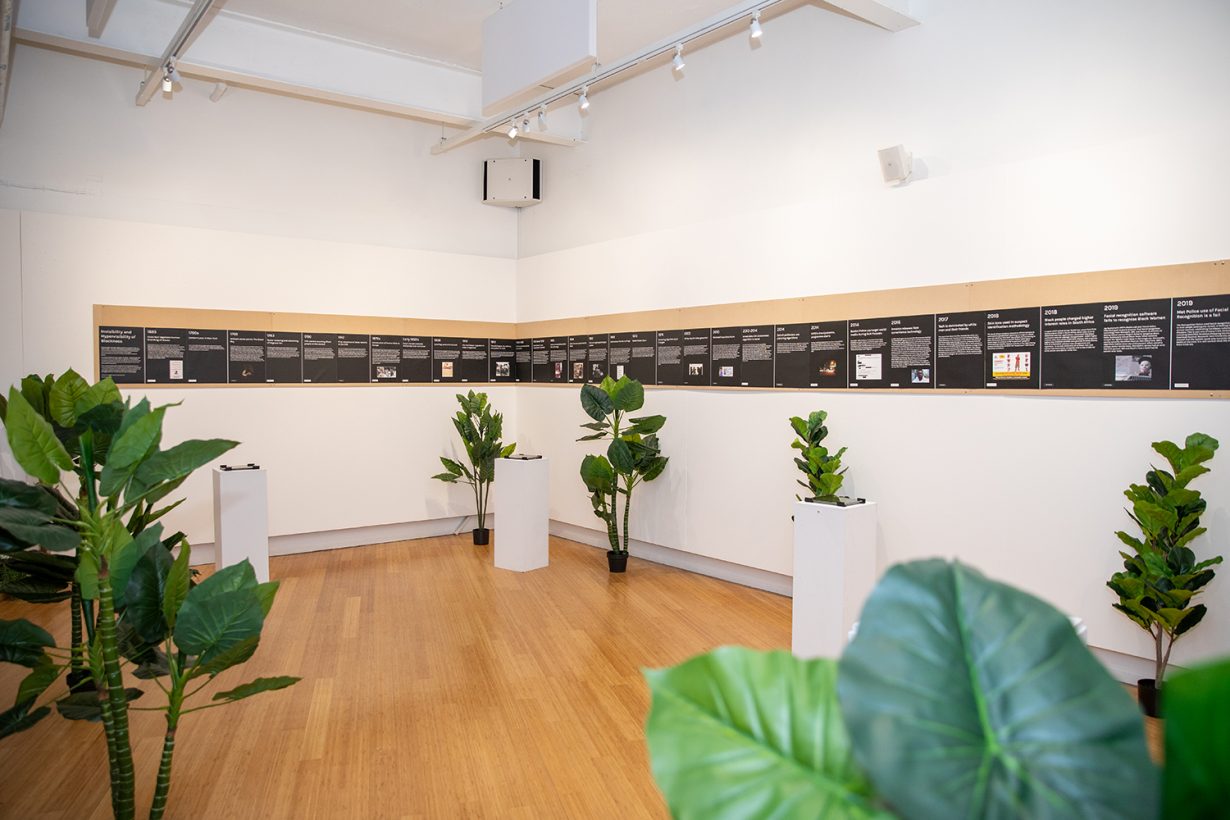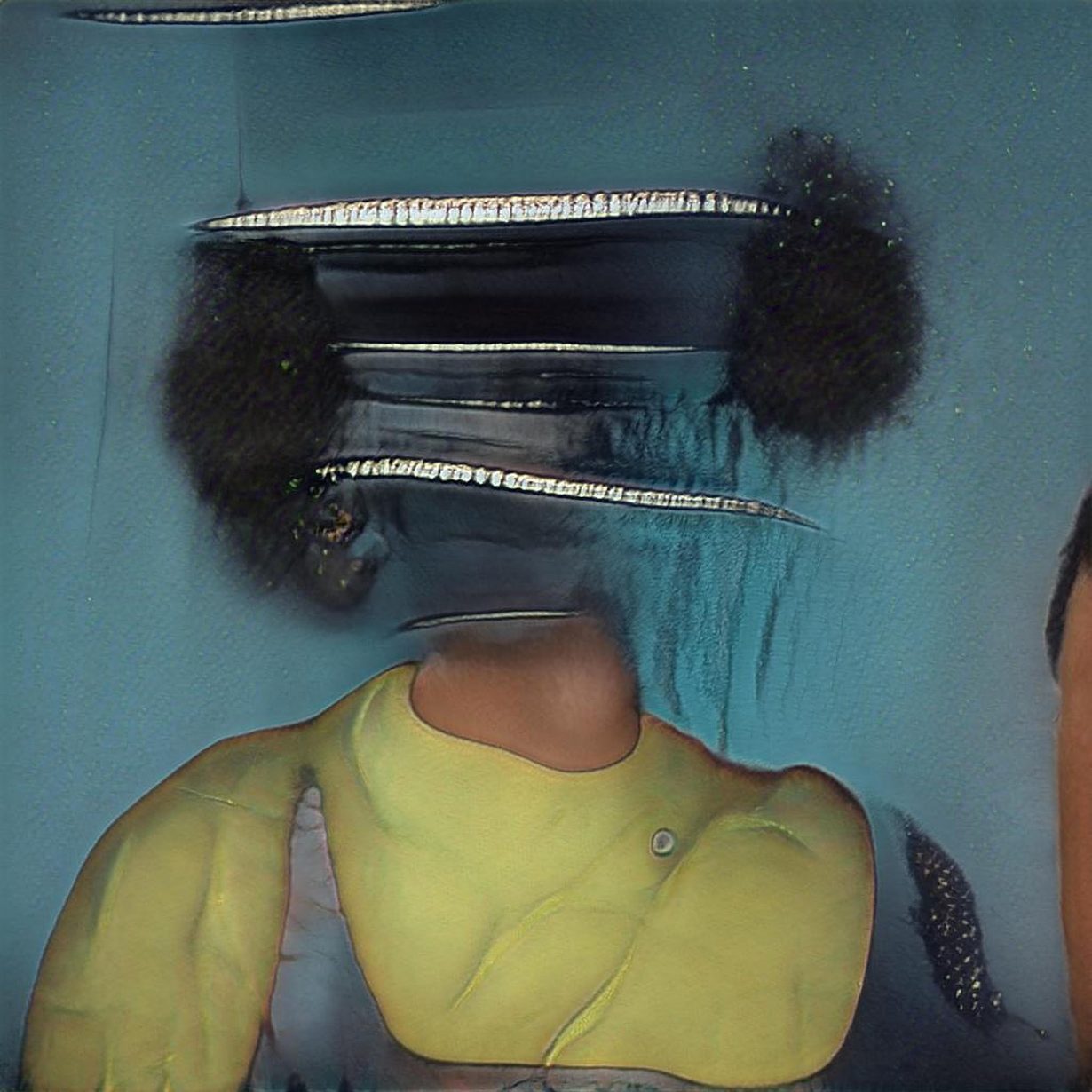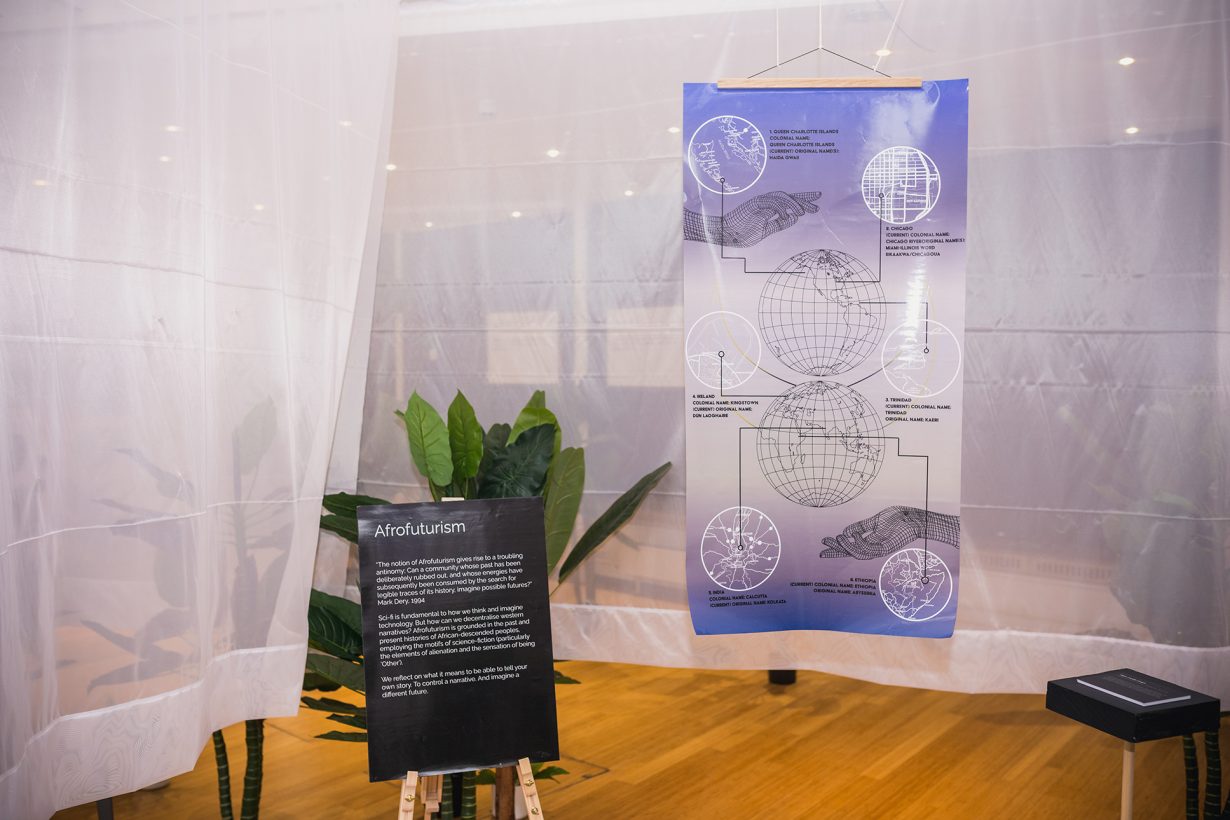Alex Stubbs considers ruminations on Deepfakes, systemic racism, Afrofuturism and identity in the digital realm
Conceived by Identity 2.0, a collective of artists concerned with the role of data and its misuse by tech companies and governments, this excavation of Black identity and the digital epoch brings attention to the racial inequalities that lie buried deep into the network of our online lives.
Entering the gallery we encounter a maze of thin, white cloth curtains hanging from the ceiling, which we must brush through to access each of the spaces. Brightly lit and punctuated with a collection of artificial potted plants, the gallery appears as a garden, a place for the viewer to reflect on the information they take in.

The first of the four themed spaces, ‘Deep Fakes’, takes inspiration from the phenomena of AI-generated fake videos in which a person, often a high-profile individual, has words quite literally put into their mouth. Two large posters hang side by side: definitions of ‘race’ and ‘technology’ as understood by Arda Awais and Savena Surana, the exhibition’s curators and Identity 2.0’s cofounders. These definitions are the nucleus of the exhibition, a jumping-off point through which the rest of the work can be read. ‘Deep Fakes’ also contains a work by London-based Nigerian designer Adza Tarka, All Leaves Matter. Outlining the structure of a leaf on a sheet of perspex, Tarka dissects systems of oppression along the leaf’s veins. Using familiar cultural phrases such as ‘just work harder’ alongside political phrases like ‘school to prison pipeline’, Tarka builds a bigger picture of race as a social construct.
In the second space, ‘Invisibility and Hypervisibility of Blackness’, a historical timeline stretches around the room, a collection of historical instances in which Black bodies have at once been made invisible and, through practices of surveillance and policing, hypervisible. Researched and presented by Surana with Hannah Uguru, they cleverly place a history of slavery and ownership of the Black body directly alongside issues of race in technology. From Kodak’s colour chart to Amazon’s face surveillance technology, the timeline highlights the historic surveillance, profiling and policing of Black bodies.

‘Afrofuturism’, the third space in the gallery, combines language and art to expose the erasure of Black identity through a futuristic lens. In London-based designer Hannah Thomas’s and writer Lauren Gee’s Man-made maps (2021), the colonial names of towns, cities and countries are written alongside their original names, teaching us, for instance, that The Queen Charlotte Islands were originally named Haida Gwaii. More a ‘mapping’ of historical narratives than one of navigation, Thomas and Gee draw the globe as a sort of matrix inspired loosely by sci-fi traditions.
Hung alongside a collection of five science-fiction posters (each designed by a different artist to reflect iconic moments in Black history), Man-made maps appears detached from the more explicit ideas of Afrofuturism explored in the posters. The decision to pair these works is confusing; Afrofuturism is never explicitly explained here, leaving us to guess at its abstract attachment to Thomas and Gee’s work while the posters do most of the hard work. Through depictions of Black history and culture, such as the Jamaican sound-system revolution explored in Visual Messiah’s print Miss HI-FI, these imaginative creations give us an idea of what the curators were hoping to achieve here.

As we reach the final part, ‘Abolition’, a line from seminal Cyberpunk author William Gibson sits displayed on an easel: ‘The future is already here: it’s just not evenly distributed.’ A trellis also stands inside the space. Clipped to it are notes bearing the responses of other visitors, placing an emphasis on the importance of an engaged community, encouraging visitors to reflect on the exhibition and the future that lies ahead.
This Machine is Black is not so much an art exhibition, rather a manifesto; an informational guide to the experiences of living as a person of colour. Whilst the exhibition drifts at times from its focus on data and the digital age, which risks drawing us slightly out of the experience, it remains true in its desire to educate us. If nothing else, this is a starting point for further conversation; a chance for us to challenge existing technological and political systems and replace them with something more equitable.
This Machine is Black is at LCB Depot, Leicester, until 30 August
This article is part of Remark, a new platform for art writing in the East Midlands by ArtReview in collaboration with BACKLIT. Read more here and sign up for the Remark newsletter here
